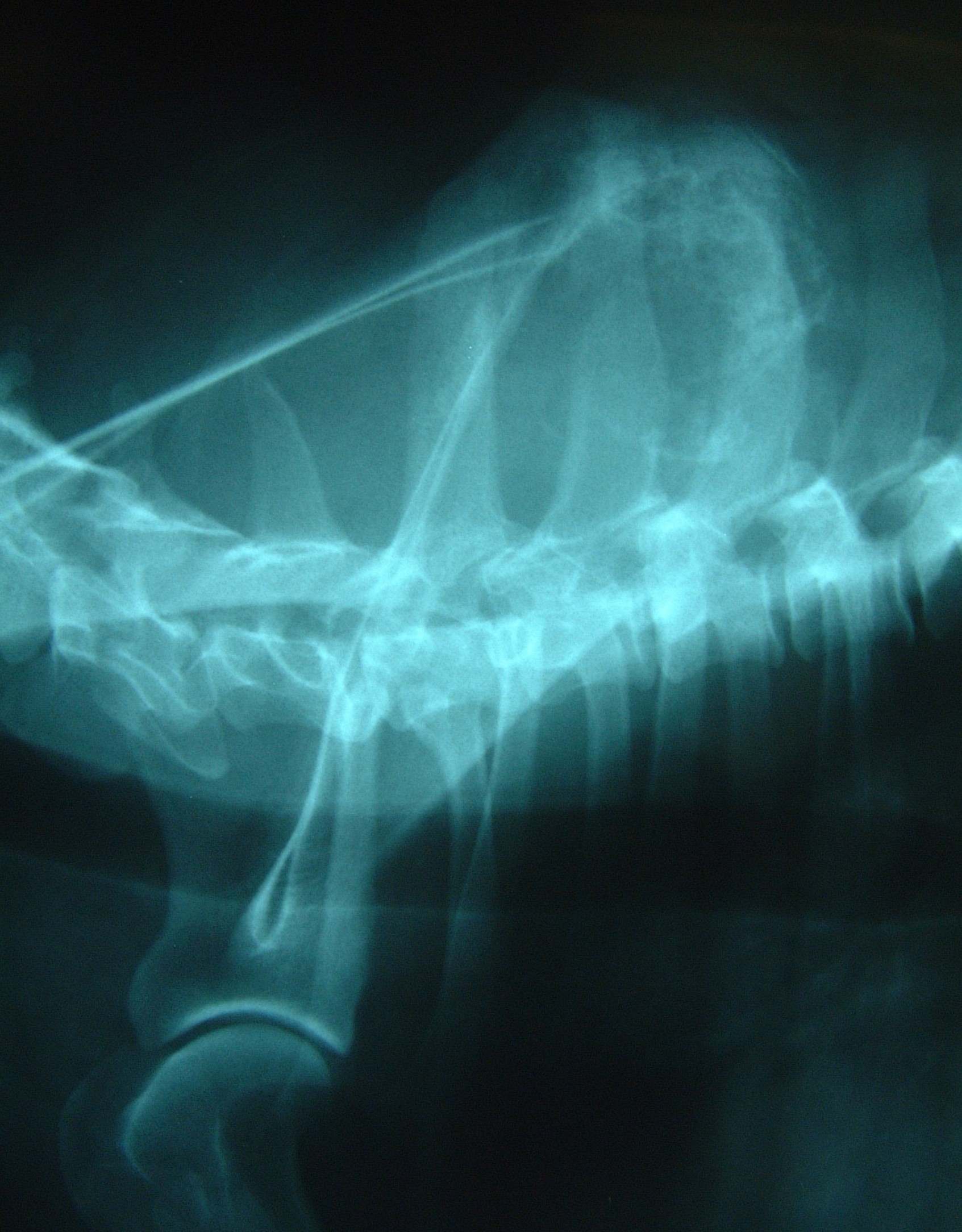scapular tumors
BACKGROUND
Scapular tumors are rare in dogs. The majority of dogs with scapular tumors present with a lameness, although occasionally a mass or swelling is the first visible sign. The most commonly reported scapular tumor is osteosarcoma, while other less common scapular tumors include soft tissue sarcoma, chondrosarcoma, hemangiosarcoma, and histiocytic sarcoma. Unlike most other osteosarcomas of the axial skeleton, scapular osteosarcomas behave more like appendicular osteosarcomas and are aggressive and highly metastatic.
DIAGNOSIS
CT scans are preferred for imaging the scapula because of superimposition of the thorax and vertebrae make interpretation of scapula masses difficult on radiographs. CT scan is for determining the presence, location, and extent of scapular tumors. Biopsy is rarely required because treatment is the same regardless of tumor type.
CLINICAL STAGING
CT scans are recommended to assess the lungs for metastasis, and this can be done at the same time and in the same series as evaluation of the scapular tumor.
TREATMENT
Partial or total scapulectomy is recommended as the tumor is excised while preserving limb function, although limb amputation is also an option. Postoperative chemotherapy is recommended for dogs with osteosarcoma, but not necessarily soft tissue sarcoma or chondrosarcoma (however, chemotherapy should be considered for dogs with high-grade soft tissue sarcomas or chondrosarcomas of the scapula).
PROGNOSIS
Limb function is good to excellent with excision of up to 90% of the scapula. Limb function is less predictable and may not be as good with total scapulectomy. In one study, limb function at 14 days after surgery was rated as excellent in 5% , good in 17%, fair in 41%, and poor in 37% of 41 dogs. By 2 months after surgery, this had improved to excellent in 10% , good in 29%, fair in 41%, and poor in 20% of dogs. Only 9 dogs were available for evaluation > 3 months after surgery with limb use excellent in 8 dogs and good in 1 dog. In this study, there was no association between postoperative lameness with the extent of surgery (i.e., partial versus total scapulectomy), but heavier dogs were more likely to have decreased limb use in the first 14 days after surgery (but not at later time points).
4 Weeks Post Partial Scapulectomy
8 Weeks Post Total Scapulectomy
The prognosis for dogs with scapular osteosarcoma is guarded and similar to osteosarcoma of the appendicular skeleton. For dogs with scapular osteosarcomas, the median disease-free interval and median survival time were 210 days and 246 days, respectively. For dogs with scapular soft tissue sarcomas, the median disease-free interval and median survival time were 366 days and 413 days, respectively. Overall, the only prognostic factor was the administration of chemotherapy postoperatively with a median survival time of 269 days for dogs treated with scapulectomy and chemotherapy compared to 107 days for dogs treated with scapulectomy alone.
Last updated on 6th March 2017



